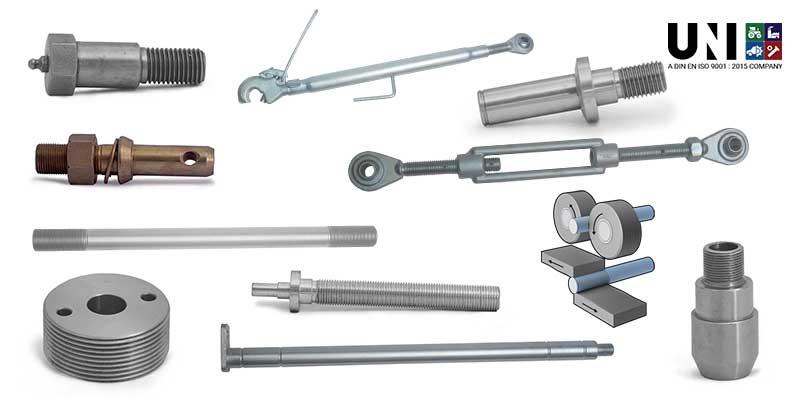Thread rolling is a cold-forming or cold metal forming process that creates threads using the precision thread rolling dies that are the mirror image of the thread being produced. Thread rolling is a mechanical process where threads are cold-formed when the part is squeezed between two thread dies on a thread rolling machine. Thread rolling provides for a stronger thread and no loss of material.
However, thread cutting operation is done on a machine using a single-point tool called thread cutting tool. The workpiece is held between centers or in a chuck and the tool is held in a tool post. A cut thread (also called a machined thread) is made by machining away the material to create the thread form. Cut threads, as the name implies, are made by cutting away material.
Difference between Thread Rolling and Thread Cutting:
1.Difference between cut and rolled threads is the top of the thread crest.
In the roll threading operation, the material is pushed up into the root of the thread die. The material on the outer edges of the thread elongates faster than the center of the thread. As the material meets the die root, the outer edges curl inward, forming the crest. The center of the crest has a slight concavity which is a normal feature. This concavity is part of the clearance interface between mating threads and does not affect the fit or function of the threaded joint. The presence of this feature at the crest of the thread is one way to visually confirm that the thread is the product of thread rolling rather than cutting, as cut threads lack this characteristic.
2.Rolling strengthens the thread profile compared to cutting
Many manufacturers prefer thread rolling to traditional thread cutting because the process of rolling strengthens the thread profile, as opposed to disrupting the natural structural integrity of material by cutting into it. Rolling elongates the grains by allowing them to flow in more than one direction following the contour of the fastener. This also results in compressive stresses at the root of the thread. The new contoured grain arrangement results in a significant increase in the strength of the produced thread.
3.Rolled threads are smoother, and damage-resistant compared to cut threads
Thread rolling changes the mechanical properties of the material by work hardening it, resulting in increased wear and fatigue resistance. However, this lowers the ductility of the threads, giving rolled threads an increased resistance to stripping under heavy stresses – an advantage over cut threads. Cut threads have a grain flow pattern that remains parallel to the part axis, weakening the thread strength in the longitudinal axis. The thread will typically fail at grain boundaries, which tend to be weaker than the grain itself. With rolled threads, the grain flows in a transverse direction, providing resistance to failure where these forces are being exerted across the grain.
4.Thread rolling also improves fatigue resistance
The rolling process increases the cold work and “burnishes” roots and flanks. This improves the surface finish as well and produces a more consistent thread form. Surface imperfections that result from thread cutting can become the imitation points for fatigue failure. Working with fine grain materials is another way to further increase the fatigue resistance of the threaded area. The finer the grain, the better the fatigue resistance, but this material quality is one that generally needs to specify, as mills make both fine and coarse-grained materials. With thread cutting the fatigue resistance is not enhanced.
The primary benefits of thread rolling conventional thread cutting
- Raw material savings
- 1/4-20 thread pattern produced approximately a 25% savings
- 3/4-16 thread pattern at approximately 16%
- Increased thread strength over machined threads
- Tensile strength increases 10%
- Root hardness increase up to 30%
- Reduced manufacturing times up to 70%
- Superior surface smoothness over other techniques
- Grain Structure retained


